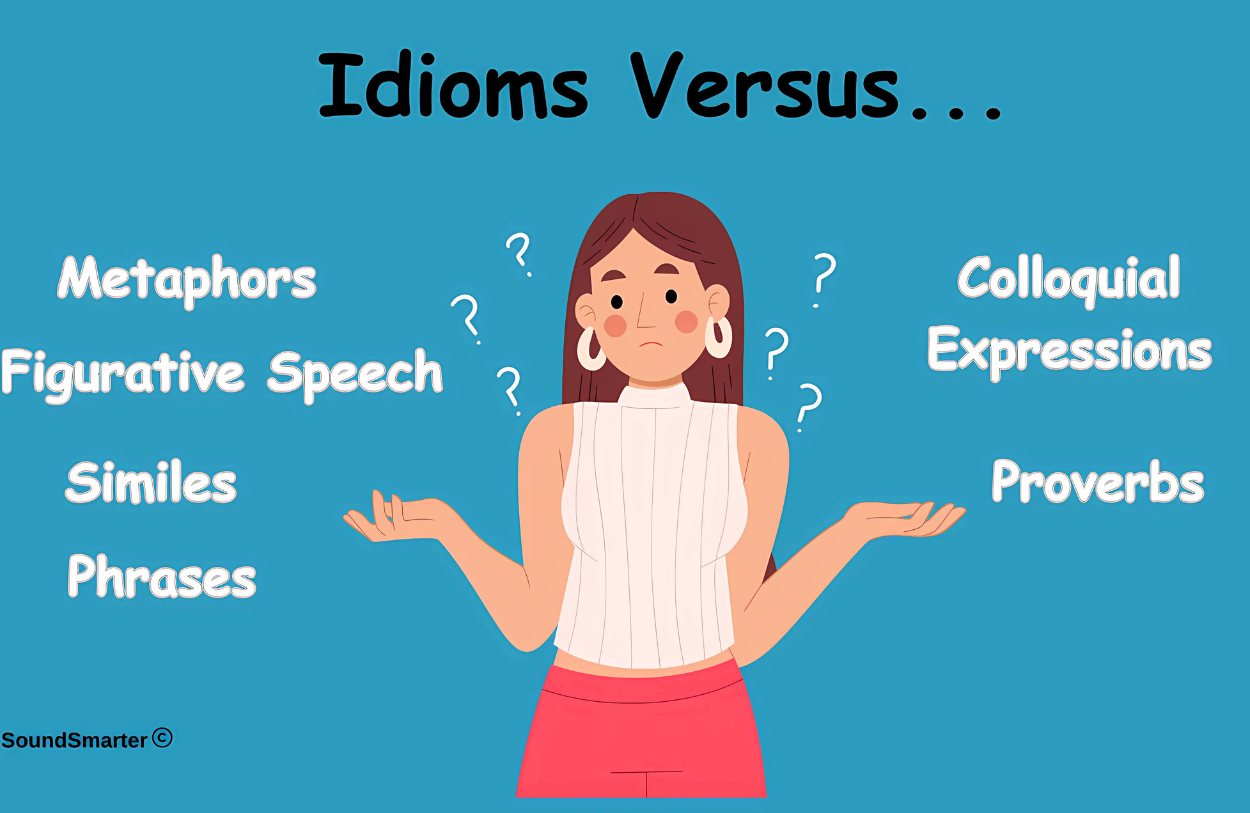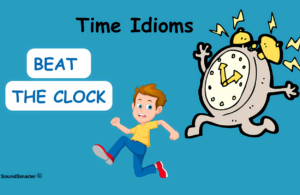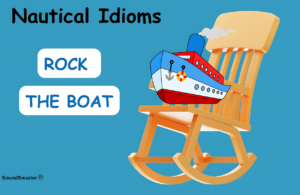Understanding how idioms differ from metaphors, similes, figurative speech and expressions can be confusing. Language is full of creative ways to express ideas, and idioms are one of the most colorful forms. However, idioms often get confused with other expressions like metaphors, similes, phrases and proverbs. So lets dive into the differences between idioms and these other forms of language, using examples to make everything clear and easy to understand.
Table of Contents
Idioms vs. Metaphors:
Idioms are phrases that have a meaning you can’t figure out just by looking at the individual words. For example, the idiom “In the ballpark” means “approximate” but the words themselves don’t give any hint of that meaning. In contrast, metaphors make a direct comparison between two things to create an image or idea, without using “like” or “as.” For example, “Time is money” is a metaphor that compares time to money, suggesting that time is valuable. While metaphors are more flexible and can be created on the spot, idioms are fixed phrases with specific meanings.
Example of a Metaphor: “She has a heart of stone” means she is very unfeeling or cold.
Example of an Idiom: “Let the cat out of the bag” means to reveal a secret.
Example of an Idiom: “Barking up the wrong tree” means pursuing a mistaken or misguided course of action.
Example of a Metaphor: “The classroom was a zoo” means the classroom was very chaotic and noisy.
Idioms vs. Figurative Speech
Figurative speech is a broad term that includes any non-literal way of speaking, such as idioms, metaphors, similes, and more. Idioms are a specific type of figurative speech, with meanings that aren’t directly related to the words used. Figurative speech in general is used to make language more vivid, emotional, or imaginative.
Example of Figurative Speech: “She has a million things to do” uses hyperbole to exaggerate the number of tasks.
Example of an Idiom: “Under the weather” means feeling sick or unwell.
Example of an Idiom: “Break the bank” means to spend all of one’s money or to cost a lot of money.
Example of Figurative Speech: “I’m drowning in work” uses a metaphor to express being overwhelmed.
Idioms vs. Similes
Similes are another type of figurative language, but they are more straightforward than idioms. A simile compares two things using “like” or “as” to highlight similarities. For example, “as brave as a lion” is a simile that compares someone’s bravery to that of a lion. Similes are easy to understand because the comparison is clear, while idioms often require knowledge of their specific meaning.
Example of a Simile: “He is as busy as a bee” means he is extremely busy.
Example of an Idiom: “In the doghouse” means you’re in trouble.
Example of an Idiom: “Plug away” means to persist.
Example of a Simile: “As light as a feather” means something is very lightweight.
Idioms vs. Phrases
Phrases are simply groups of words that work together as a unit within a sentence. They can be literal or figurative, and not all phrases carry a special meaning like idioms do. For example, “in the blink of an eye” is a phrase that means something happened very quickly, but it’s also an idiom because the meaning isn’t literal. On the other hand, “in the morning” is just a phrase that literally describes a time of day.
Example of a Phrase: “In the morning” simply refers to the early part of the day.
Example of an Idiom: “Break the ice” means to start a conversation in a social setting.
Example of an Idiom: “Piece of cake” means something is very easy to do.
Example of a Phrase: “At the end of the day” refers literally to the close of a day, but can also be used figuratively to mean “ultimately” in a discussion.
Idioms vs. Colloquial Expressions
Colloquial expressions are informal phrases used in everyday conversation. They can include idioms, slang, or any casual language that reflects regional or cultural speech patterns. While idioms are a type of colloquial expression, not all colloquial expressions are idioms. For instance, saying “gonna” instead of “going to” is a colloquial expression, but it’s not an idiom. Colloquial expressions are usually more about casual communication, while idioms often have a fixed and sometimes figurative meaning.
Example of an Idiom: “Asleep at the wheel” means to be negligent.
Example of an Idiom: “The ball is in your court” means to it’s your move.
Example of a Colloquial Expression: “Y’all” is a casual way of saying “you all,” commonly used in Southern American English.
Example of a Colloquial Expression: “Gonna” is a casual way of saying “going to.”
Idioms vs. Proverbs
Proverbs are short sayings that offer advice or share a lesson. They are often passed down through generations and are meant to teach something valuable. For example, “A penny saved is a penny earned” is a proverb that encourages saving money. Unlike idioms, which are more about expressing ideas in a creative way, proverbs are focused on conveying wisdom or advice.
Example of an Idiom: “Burn the midnight oil” means to work late into the night
Example of a Proverb: “Actions speak louder than words” means what you do is more important than what you say.
Idioms are just one way to make language more colorful and expressive, but they are often confused with other forms of figurative language. By understanding the differences between idioms and other expressions like metaphors, similes, proverbs, and colloquial sayings, you can enhance your communication skills and use these expressions more effectively.




